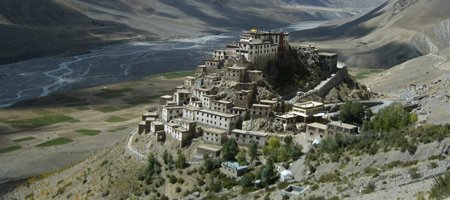As per researchers, the two units of Lahaul and Spiti District that are Lahaul and Spiti have separate historical backgrounds. In the distant past Lahaul had been changing hands between the rulers of Ladakh and Kullu. In the second half of the seventeenth century with the disintegration of Ladakh kingdom, Lahaul passed into the hands of the Kullu chief. In 1840, Maharaja Ranjit Singh took over Lahaul along with Kullu and ruled over the region till 1846 when the area came under the sway of the British rulers. .Rom 1846 to 1940, Lahaul formed part of the Kullu sub-division of Kangra District and was administered through the local jagirdars or thakurs. One of the thakurs was was invested with the judicial and executive powers. Another thakur was given the status of a Revenue Officer. These functionaries exercised traditional as well as other power conferred by the government. The Assistant Commissioner of Kullu used to visit the area once a year for a month or so. In the late thirties the unprecedented prosperity of the people and their consequent awakening created a formidable challenge to the power and influence of the thakur of Lahaul, which gradually started declining.
Monastery

Lahaul & Spiti, which now form, a district of Himachal Pradesh, bordering Tibet, were at one time separate Himalayan waziries or cantons of the Kullu sub-divisions, and Kullu itself formed a part of Kangra district of Punjab.
The two units of the district i.e. Lahaul & Spiti, have separate historical backgrounds. In the distant past Lahaul had been changing hands between the rulers of Ladakh and Kulu. In the second half of the seventeenth century with the disintegration of Ladakh kingdom, Lahaul passed into the hands of the Kulu chief. In 1840, Maharaja Ranjit Singh took over Lahaul along with Kulu and ruled over it till 1846 when the area came under the sway of the British. From 1846 to 1940, Lahaul formed part of the Kulu sub-division of Kangra district and was administered through the local jagirdars/thakurs. One of the thakurs was designated as Wizier of Lahaul & was invested with judicial and executive powers. Another thakur was given the powers of a Revenue Officer. These functionaries exercised traditional as well as other power conferred by the Government. The Assistant Commissioner. Kulu used to visit the area once a year for a month or so. In the late thirties the unprecedented prosperity of the people through growing kuth and their consequent awakening created a formidable challenge to the power and influence of the Wizier of Lahaul, which gradually started declining. The inadequacy was soon noticed by the Government which considered the extension of the regular system of administration



